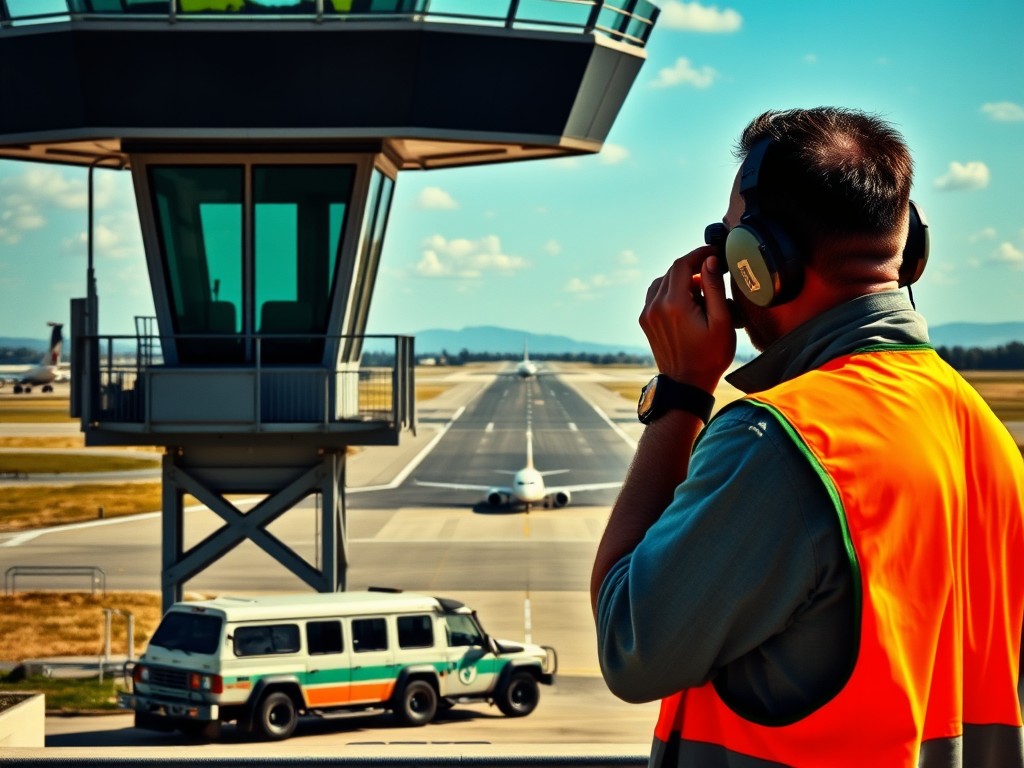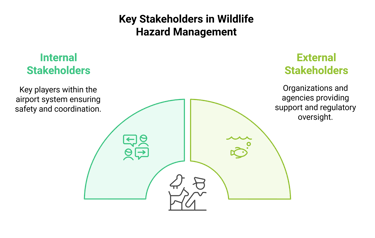Who Does What? Understanding the Key Stakeholders in Wildlife Hazard Management at Aerodromes
This article breaks down the roles and responsibilities of the main players involved in wildlife hazard management at aerodromes. By recognizing the contributions of aerodrome operators, regulatory authorities, and wildlife control specialists, readers gain a clearer picture of how these stakeholders collaborate to ensure safer skies.
FUNDAMENTALS OF WILDLIFE HAZARD MANAGEMENT
Waleed MAHROUS
12/13/20242 min read


Understanding the key stakeholders involved in wildlife hazard management at aerodromes is essential for maintaining aviation safety. These stakeholders collaborate to implement effective wildlife management strategies, ensuring safer skies. This blog will explore the roles and responsibilities of these stakeholders, building on the previous discussion about international regulations like ICAO Annex 14 and PANS-Aerodromes.
Key Stakeholders in Wildlife Hazard Management
Aerodrome Operators
Role: Develop and implement the Wildlife Hazard Management Programme (WHMP).
Responsibilities: Conduct risk assessments, manage habitats, and ensure compliance with regulations [2].
Wildlife Hazard Management Coordinator/Manager
Role: Oversee daily wildlife management activities.
Responsibilities: Coordinate with air traffic control (ATC) and other stakeholders, review strike reports, and implement control measures [1].
Airport Wildlife Hazard Management Committee
Role: Facilitate communication and coordination among various groups.
Responsibilities: Review strike data, assess risks, and develop management strategies.
Air Traffic Control (ATC)
Role: Monitor and communicate wildlife hazards to pilots.
Responsibilities: Issue warnings about increased wildlife activity and coordinate with wildlife management teams [2] [3].
Airline Representatives (Including Pilots)
Role: Provide input on wildlife strike incidents.
Responsibilities: Report strikes and collaborate on risk assessments [2].
Local Authorities and Land Management Organizations
Role: Manage land use around aerodromes to minimize wildlife attractions.
Responsibilities: Collaborate with aerodrome operators to address potential hazards from surrounding areas [2].
External Stakeholders
Conservation Organizations
Role: Provide expertise on wildlife conservation.
Responsibilities: Ensure that management strategies are environmentally sustainable [2].
Government Agencies
Role: Regulate and provide oversight for wildlife hazard management.
Responsibilities: Ensure compliance with national and international standards [2].
Communication and Collaboration
Effective wildlife hazard management requires robust communication strategies among all stakeholders. This includes:
Data Sharing: Collecting and sharing data on wildlife observations and strikes to improve management practices [2] [4].
Training Programs: Providing comprehensive training for personnel involved in wildlife management to ensure they are equipped to handle various situations [1] [3].
Regular Meetings: Holding regular meetings with stakeholders to evaluate the effectiveness of current strategies and make necessary adjustments [4].
By understanding the roles of these stakeholders, aerodromes can implement more effective wildlife hazard management programs, aligning with international guidelines discussed in ICAO Annex 14 and PANS-Aerodromes. This collaborative approach not only enhances aviation safety but also promotes environmental stewardship around airports.
Citations:
[3] https://www.icao.int/MID/Documents/2018/WHMC-December/2-4%20Wildlife%20Hazards%20Management.pdf
[4] https://www.icao.int/APAC/Documents/APAC%20Guidance%20for%20Evaluation%20of%20Aerodrome%20WHMP.pdf
[5] https://www.slaspa.com/media/attachments/2019/08/24/airport-wildlife-assistant-job-description.pdf
[7] https://airlinegeeks.com/2024/09/27/careers-in-airport-wildlife-management/



